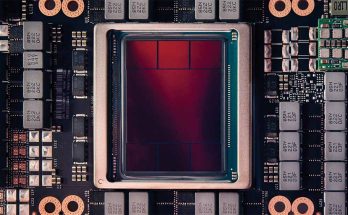“The chip patterning machines that will shape computing’s next act”
Print Title: “Lithography’s long journey”
MIT Technology Review, June 23, 2023
Computing
by Chris Miller
“The first lithography tools were fairly simple, but the technologies that produce today’s chips are among humankind’s most complex inventions.”
When we talk about computing these days, we tend to talk about software and the engineers who write it. But we wouldn’t be anywhere without the hardware and the physical sciences that have enabled it to be created—disciplines like optics, materials science, and mechanical engineering. It’s thanks to advances in these areas that we can fabricate the chips on which all the 1s and 0s of the digital world reside. Without them, modern computing would have been impossible.
Semiconductor lithography, the manufacturing process responsible for producing computer chips, has 70-year-old roots. Its origin story is as simple as today’s process is complex: the technology got its start in the mid-1950s, when a physicist named Jay Lathrop turned the lens in his microscope upside down.
Lathrop, who died last year at age 95, is scarcely remembered today. But the lithography process he and his lab partner patented in 1957 transformed the world. Steady improvement in lithographic methods has produced ever-smaller circuitry and previously unimaginable quantities of computing power, transforming entire industries and our daily lives.
Today lithography is a big business with tiny margins for error. The world leader, the Dutch firm ASML, is also Europe’s largest tech company by market capitalization. Its lithography tools—which rely on the world’s flattest mirrors, one of the most powerful commercial lasers, and an explosion far hotter than the surface of the sun—can pattern tiny shapes on silicon, measuring just a handful of nanometers. This nanometer-scale precision, in turn, makes it possible to manufacture chips with tens of billions of transistors. You probably rely on chips made with these ultra-advanced lithography tools; they can be found in your phone, your PC, and the data centers that process and remember your data.
Of all the mind-bogglingly precise machines that manufacture chips, lithography tools are the most critical—and the most complex. They require hundreds of thousands of components and billions of dollars of investment. But they are not only the subject of commercial rivalry and scientific wonder; they stand at the center of a geopolitical competition to control the future of computing power. Where computing goes next will be shaped by the evolution of the lithography industry—and the struggle to produce even more precise lithography tools. The history of the technology’s development suggests that any future advances will rely on even more complex and precise machinery, and even more far-flung supply chains, to produce the specialized components required. The speed at which new lithography systems and components are developed—and the question of which companies and countries manage to manufacture them—will shape not only the speed of computing progress but also the balance of power and profits within the tech industry.
About the Author:
Chris Miller is author of Chip War: The Fight for the World’s Most Critical Technology and an associate professor at the Fletcher School at Tufts University.
See also:





